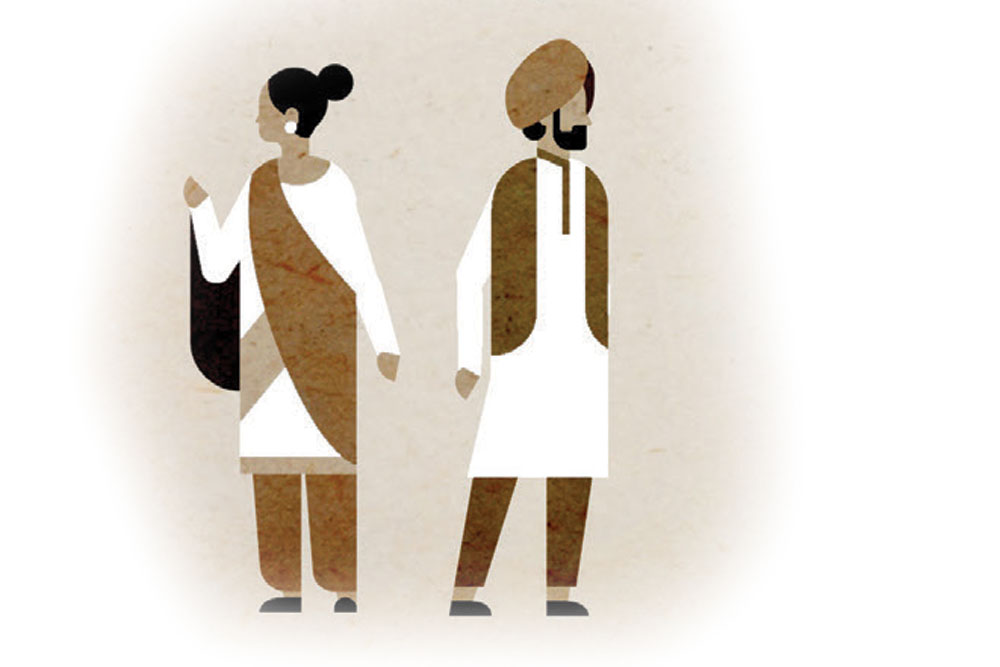THE QUEST FOR a uniform legal system dealing with marriage, divorce, inheritance, adoption and other matters for all Indians irrespective of their religion has a tangled history. Part of the Directive Principles of State Policy, the ideal has remained a dead letter until now. India’s politics has, so far, precluded that possibility. This incomplete journey has a number of twists and turns. The British refrained from passing any uniform laws on civil matters. Instead, they codified the personal laws of minorities. This is the roadblock that persists to date and militates against a potential Uniform Civil Code (UCC).
THE MUSLIM PERSONAL LAW (SHARIAT) APPLICATION ACT, 1937
-Section 2 of this Act exhaustively listed civil matters that will be settled in accordance with Muslim personal law alone where the parties involved profess Islam.
-Passed by the colonial legislature, the Act remains an article of faith for conservative Muslim opinion. Only in recent years, in the teeth of opposition, has a small part of the Act, a portion dealing with divorce (triple talaq), been outlawed.
THE DIVORCE ACT, 1869
-The Act was passed by colonial authorities to deal with persons professing Christianity.
-The reverberations of this law continue to be felt in the 21st century. In a 2015 case in the Supreme Court, Section 10A (1) of the law was challenged as it prescribed a two-year period of separation before divorce by mutual consent can be granted.
-One of the judges hearing the case, Justice Vikramjit Sen, urged the government to take a quick decision on UCC in case it wanted one.
THE ANAND MARRIAGE ACT, 1909
-Another colonial law that was exclusively designed for Sikhs outlines the procedure for registration of marriages solemnised according to Sikh tradition (rehat maryada).
-The Act is now part and parcel of Sikh identity politics. After the recent debate on UCC, some Sikh politicians claimed that since they had a separate law dealing with marriages, they did not want anything that diluted their religious identity.

THE DEBATES OF THE 1940S AND 1950S
-A truncated version of UCC, targeted at the Hindu community was introduced in the Constituent Assembly (CA) in 1948. Instead of UCC, the Code was meant for Hindus while leaving other Indians out of its purview. It did not sail through.
-There was vigorous debate on the subject in the CA. Muslim members of the House sought to immunise Muslim Personal Law from the ambit of a potential UCC.
-In contrast, members like NC Chatterjee argued: “Why not frame, if you have the courage and the wisdom to do it, one Uniform Civil Code? Why are you then proceeding with communal legislation?”
-A fresh attempt was made to pass the Code after the Constitution had been framed and the CA had finished its work. This led to a clash between Prime Minister Jawaharlal Nehru and President Rajendra Prasad. Prasad pointed out insufficient consultation and the one-sided nature of the proposed law.
-The Hindu Code Bill was truncated into separate pieces of legislation to dilute Hindu opposition to the law that targeted the community exclusively. These laws were passed by 1956 and the matter ended there.

CONTRADICTIONS AND 21ST CENTURY SOLUTIONS
-Even before the contradictions due to separate laws for different religious denominations became apparent, the judiciary began arguing for a UCC. In the Kesavananda Bharati case that dealt with a different set of issues, the court said: “Desirable as it is [UCC], the Government has not been able to take any effective steps towards the realisation of this goal. Obviously no Court can compel the Government to lay down a uniform civil code even though it is essentially desirable in the interest of the integrity, and unity of the country.”
-After that there was a string of cases that showed the necessity of UCC. The first time this struck a chord was in the Shah Bano case (1985). After protracted litigation a person was ordered to give a paltry sum as maintenance to his divorced wife as per provisions of law. This led to a protest as it was held by the community to be against its personal law. The judgment of the Supreme Court was nullified by an Act of Parliament.
-In its judgment in the Shah Bano case, the apex court reiterated the need for UCC. It said: “A common Civil Code will help the cause of national integration by removing disparate loyalties to laws which have conflicting ideologies.”
-The judges also noted: “A counsel in the case whispered, somewhat audibly, that legislative competence is one thing, the political courage to use that competence is quite another. We understand the difficulties involved in bringing persons of different faiths and persuasions on a common platform. But, a beginning has to be made if the Constitution is to have any meaning.”

-In the Sarla Mudgal case (1995), the Supreme Court made a strong pitch for UCC: “When more than 80% of the citizens have already been brought under the codified personal law there is no justification whatsoever to keep in abeyance, any more, the introduction of “uniform civil code” for all citizens in the territory of India.”
-The court ordered the Centre to list the steps taken to secure UCC. But nothing came of it.
-In the 21st century a number of judges, including erstwhile Chief Justice of India (CJI) SA Bobde, have highlighted the importance of bringing UCC. In March 2021, Bobde highlighted Goa’s UCC and urged intellectuals to study it so that they could understand how it worked.
-In June, the Law Commission invited views on UCC leading to speculation that such a Code may be in the offing. Uttarakhand appointed a committee by a former judge to draft a UCC that could be passed by the state legislature.
More Columns
‘Fuel to Air India plane was cut off before crash’ Open
Shubhanshu Shukla Return Date Set For July 14 Open
Rhythm Streets Aditya Mani Jha